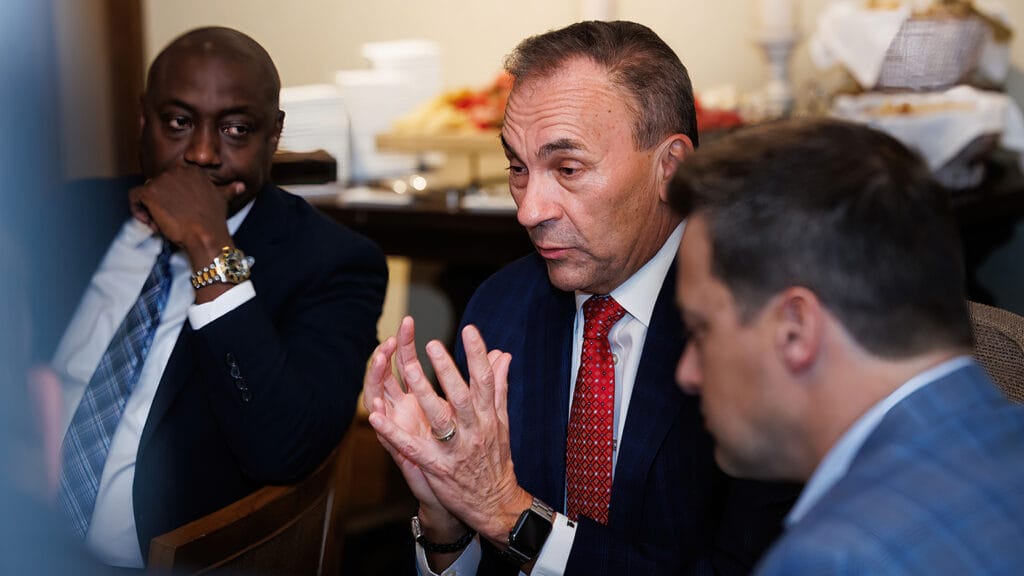
The long-term care sector is recovering well from the worst challenges of the COVID-19 pandemic, optimistic top leaders said. But some problems that began during the pandemic have only worsened with time, the veteran experts also warned during a special McKnight’s VIP Executive Conversation Thursday.
Rising occupancy levels and demand for long-term care beds were tempered with pessimism over workforce concerns and regulatory burdens that have remained heavy
“I would definitely say yes [the sector is] recovering,” said Deke Cateau, CEO at Atlanta-based provider AG Rhodes. “Occupancy is the trigger point we all point to and it has certainly been on the way up.”
Though Cateau acknowledged that many regulatory pressures of the pandemic were “getting worse” with time, he was among the most optimistic of the participants, each of whom was a 2024 McKnight’s Pinnacle Award winner to be honored later that night Chicago.
“I think the demography of our country is [indicating] that we have to recover,” Cateau said.
Stalled by staffing
Nursing homes, however, are experiencing only a partial recovery, believes Roberto Muñiz, president and CEO of New Jersey-based Parker Health Group and board chair of LeadingAge. That recovery is not coming fast enough, he warned.
“There’s no interest in getting into our field,” Muñiz said. “As a whole, I think there’s a lot more to be done and the post-COVID situation has put us in a very difficult situation.”
Muñiz noted that while demand for beds has shot up during the pandemic’s decline, many facilities now struggle to facilitate all the new residents they can admit.
“It’s multifaceted,” agreed Andy Carle, adjunct faculty and lead instructor at Georgetown University’s administrator training program. He explained that demand has shot up, but that it will likely be at least 10 years before eldercare facilities can adequately deal with the demand again.
“We lost a lot of people. We were mathematically eliminated from having enough employees even before the pandemic,” Carle said, adding that the solution likely lies in immigration reform. “We’re going to be mathematically eliminated for at least the next decade until we get our act together. You can build all the Starbucks you want — if you don’t have somebody to mix the coffee and shout out your mispronounced name, you can’t open a Starbucks. So if we don’t have the labor, it’s not going to matter what the demand is.”
Carle later added that immigration reform would be a potential solution to this massive workforce shortfall.
Important reminders
Workforce concerns may only worsen this year as the industry braces for the final form of the Centers for Medicare & Medicaid Services nursing home staffing rule.
That may be especially true in rural areas where providers could be forced to expend “unbelievable” costs on agency workers, said Cathy Williams, an independent facility operator and the president of the Arizona Health Care Association Foundation.
Ultimately, providers are faced with reminding lawmakers that they are still squarely in the process of recovering from a truly devastating event, said Clif Porter, senior vice president of government affairs at the American Health Care Association.
“My full time job is reminding Congress and every policymaker … that the worst cataclysm in the last 100 years just happened a few years ago,” Porter said. “As much as folks want to move on … the reality is that we have to remind them that we’re not [recovered] and why.”





